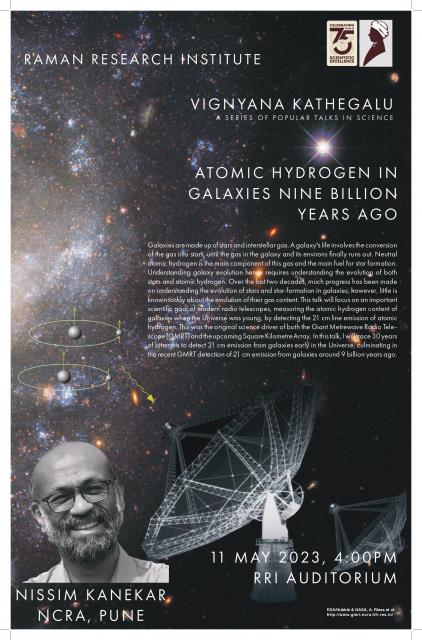Vignayana Kathegalu
Atmoic Hydrogen in Galaxies Nine Billion Years Ago
Speaker: Prof. Nissim Kanekar (National Centre for Radio Astrophysics (NCRA), Pune)
Galaxies are made up of stars and interstellar gas. A galaxy's life involves the conversion of the gas into stars, until the gas in the galaxy and its environs finally runs out. Neutral atomic hydrogen is the main component of this gas and the main fuel for star formation. Understanding galaxy evolution hence requires understanding the evolution of both stars and atomic hydrogen. Over the last two decades, much progress has been made on understanding the evolution of stars and star formation in galaxies; however, little is known today about the evolution of their gas content. This talk will focus on an important scientific goal of modern radio telescopes, measuring the atomic hydrogen content of galaxies when the Universe was young, by detecting the 21 cm line emission of atomic hydrogen. This was the original science driver of both the Giant Metrewave Radio Telescope (GMRT) and the upcoming Square Kilometre Array. In this talk, I will trace 30 years of attempts to detect 21 cm emission from galaxies early in the Universe, culminating in the recent GMRT detection of 21 cm emission from galaxies around 9 billion years ago.
